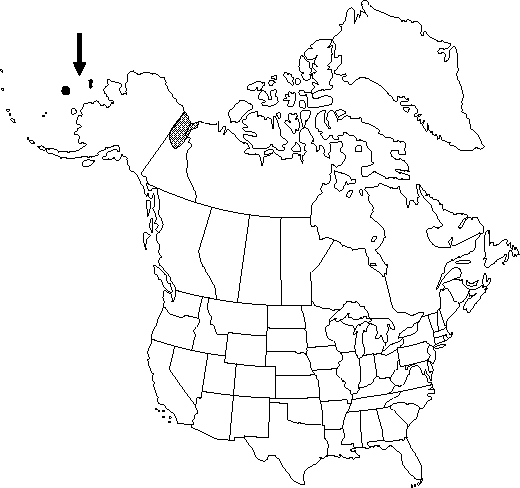Difference between revisions of "Ranunculus turneri"
Pittonia 2: 296. 1892.
FNA>Volume Importer |
FNA>Volume Importer |
Revision as of 19:51, 24 September 2019
Stems erect, never rooting nodally, hirsute, base not bulbous. Roots never tuberous. Basal leaf blades cordate to reniform in outline, 3-parted, 1.3-3 × 1.8-3.8 cm, segments cleft, ultimate segments elliptic to lanceolate, margins toothed, apex acute. Flowers: receptacle glabrous; sepals spreading, 7-9 × 2-4 mm, hirsute; petals 5, yellow, 10-15 × 8-11 mm. Heads of achenes nearly globose, 7-10 mm wide; achenes 2.4 × 2.6-2.7 mm, glabrous, margin forming narrow rib 0.1-0.2 mm wide; beak persistent, lanceolate, strongly hooked or curved, 1.6-2 mm.
Phenology: Flowering summer (Aug).
Habitat: Damp meadows
Elevation: 0 m
Distribution

N.W.T., Yukon, Alaska, Asia.
Discussion
Of conservation concern.
Ranunculus turneri was considered an arctic race of R. acris by E. Hultén (1971). It occurs from the Mackenzie Delta to northeastern Alaska.
Selected References
None.